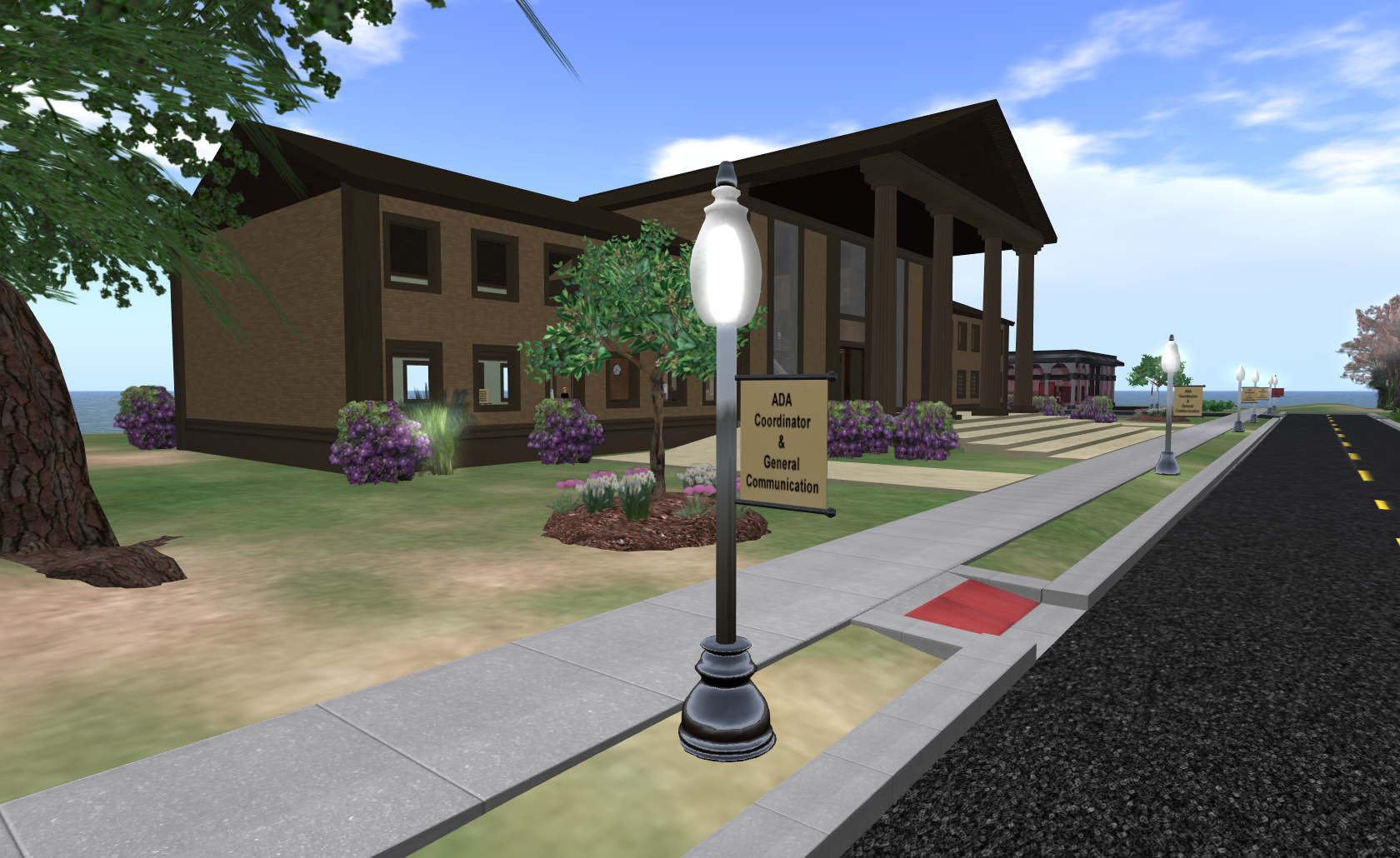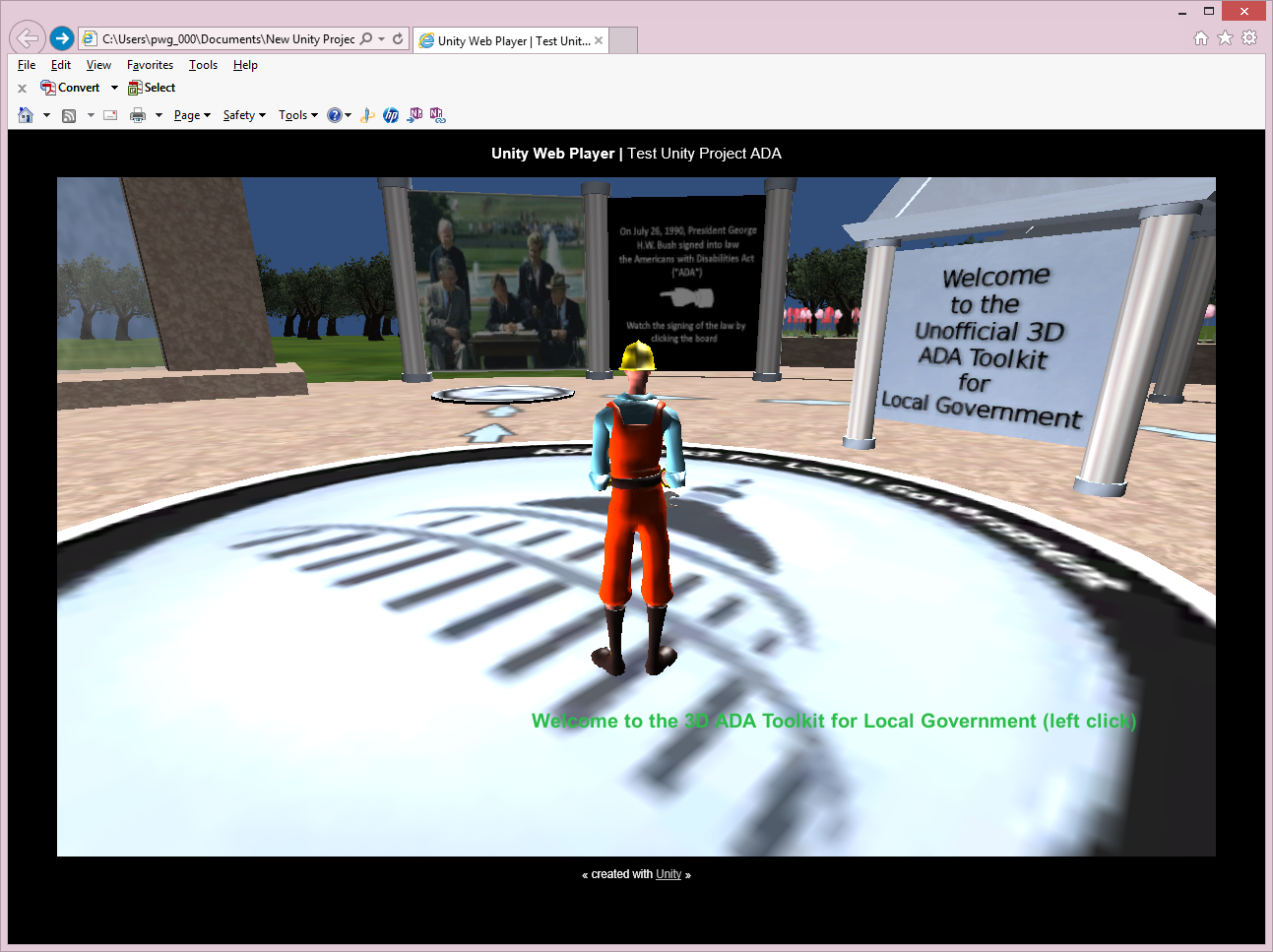
A couple years ago I put together an unofficial 3D version of the ADA Toolkit for Local Government. It was based in an immersive environment anyone could visit and experience as an avatar or digital representation of themselves. Normally the ADA Toolkit is only available as an online, primarily text-based document. So I figured the ability to learn it through an engaging and interactive format might offer a much more interesting and possibly memorable experience. Eventually I moved this build over to Kitely – a service which hosts 3D immersive environments created using OpenSimulator software. People who want to visit and stroll through the 3D ADA Toolkit can still do so by visiting Kitely.com, signing up for an account or using an existing Twitter or Facebook account, and then accessing the 3D ADA Toolkit through the use of a viewer that Kitely will install on their computer. But while Kitely makes it very easy for someone to visit the places it hosts, some people are still hesitant to try out this type of experience – particularly those who are new to using an avatar to interact with digital content. So for some time, I have been wanting to create the same build in Unity 3D because it still offers the ability to visit and interact with the information in a 3D format, but does not rely on a login or the installation of a software program in order to view the content. Instead Unity 3D allows everything to work directly in someone's browser with only the installation of a plug-in to the browser. The end result can be closer to the browsing experience people already are familiar with.
It took some time for me to actually accomplish a build in Unity 3D for several reasons. One was the need to learn the software and interface. Fortunately there are plenty of tutorials out there for this so I was able to at least become comfortable with it over time by following these examples. But I still faced the need to create new content and doing so in the Unity 3D environment is not very easy. It definitely is not as easy as creating it in something like OpenSimulator. Then just within the last month or so, the folks who develop the Singularity viewer for OpenSimulator came up with a way to export 3D objects from the OpenSimulator environment. So I was able to export the objects from the 3D ADA Tooklit in OpenSimulator and import them into a Unity 3D build.
While that certainly helped move the project along, I quickly figured out there was still a lot more to learn to create an interactive environment. By again researching tutorials, I managed to script some popup messages to simulate what someone would see in the original OpenSimulator build. So at this point I have a very simple example of a portion of the 3D ADA Toolkit for Local Government in a Unity 3D environment. I caution anyone who decides to try it out that it is far from perfect. I need to learn how to do a better job with the messages, perhaps add some NPCs, create more interactive elements, and figure out how to launch a website so that it doesn't take the person out of the Toolkit forcing them to restart it to get back in. It would also be nice to figure out how to keep the flowers from floating just above the ground. Anyway, so far I've only made the welcome area and the historical background of the ADA laws related to right of way interactive – the rest of it has not yet been done. And, again, I don't have the entire toolkit in Unity 3D – only a small portion. If you want to check it out, just click the image below – if you've never run Unity 3D in your browser it will prompt you to install the Unity 3D plugin. And remember if you click anywhere in the Toolkit to access a website, you'll have to relaunch the Toolkit to get back in. Thanks for trying it out! I'd also love to get any type of feedback on it.



